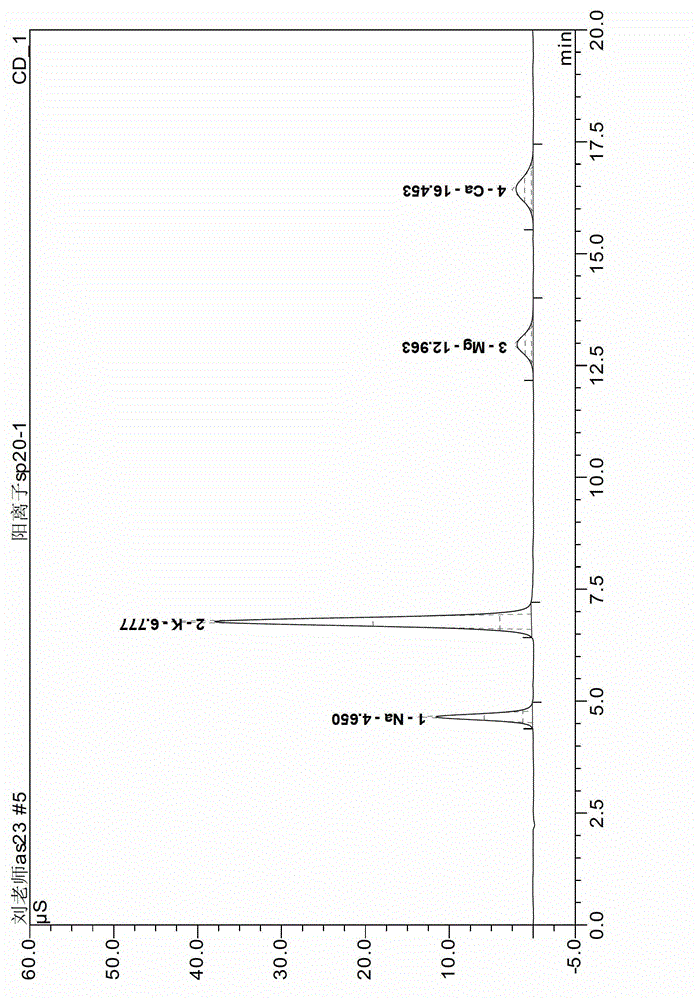Gloconacetobacter xylinum and method for fermenting high-yield bacterial celluloses through mixed flora
A technology of bacterial cellulose and Acetobacter xylinum, applied in the direction of microorganism-based methods, bacteria, fermentation, etc., can solve the problems of long fermentation cycle, low production efficiency, and large-scale production restrictions, and achieve dense and uniform texture, simplify Labor intensity and the effect of shortening production time
- Summary
- Abstract
- Description
- Claims
- Application Information
AI Technical Summary
Problems solved by technology
Method used
Image
Examples
Embodiment 1
[0041] In the first step, Acetobacter AC-0720, Lactobacillus DMDL9010 and Acetobacter xylinum HNX01 were respectively cultured at high density according to the following steps, and the number of live bacteria in the seed liquid of the three strains reached 10 respectively. 8 Above CFU / mL:
[0042] 1. Inoculate 0.1g of Lactobacillus DMDL9010 freeze-dried powder into 10mL of DMDL9010 seed medium, and culture it statically at 25°C for 20 hours to make the first seed liquid of DMDL9010; inoculate the first seed liquid with a volume ratio of 5:100 Into the DMDL9010 seed medium, cultured statically at 25°C for 28 hours to prepare the second seed solution of DMDL9010.
[0043] The formula of described Lactobacillus DMDL9010 seed medium is: peptone 8.0g / L, yeast powder 8g / L, glucose 25g / L, triamine citrate 1.0g / L, MgSO 4 .7H 2 O0.3g / L, beef extract 12.5g / L, KH 2 PO 4 2.0g / L, MnSO 4 .4H 2 0.04g / L, sodium acetate 2.0g / L, Tween 801.1g / L; The preparation method of described DMDL901...
Embodiment 2
[0054] In the first step, Acetobacter AC-0720, Lactobacillus DMDL9010 and Acetobacter xylinum HNX01 were cultured at high density according to the following steps, and the number of viable bacteria in the seed liquid of the three strains reached 10 respectively. 8 CFU / mL or more.
[0055] 1. Inoculate 0.5g of Lactobacillus DMDL9010 freeze-dried powder into 10mL of DMDL9010 seed medium, and culture it statically at 30°C for 24 hours to make the first seed liquid of DMDL9010; inoculate the first seed liquid with a volume ratio of 10:100 Into the DMDL9010 seed medium, cultured statically at 30°C for 24 hours to prepare the second seed solution of DMDL9010.
[0056] The formula of described Lactobacillus DMDL9010 seed medium is: peptone 12.0g / L, yeast powder 5g / L, glucose 15g / L, triamine citrate 1.5g / L, MgSO 4 .7H 2 O0.1g / L, beef extract 15g / L, KH 2 PO 4 0.5g / L, MnSO 4 .4H 2 0.09g / L, sodium acetate 3.5g / L, Tween 800.5g / L; The preparation method of described DMDL9010 seed cu...
Embodiment 3
[0066] In the first step, Acetobacter AC-0720, Lactobacillus DMDL9010 and Acetobacter xylinum HNX01 were respectively cultured at high density according to the following steps, and the number of live bacteria in the seed liquid of the three strains reached 10 respectively. 8 More than CFU / ml.
[0067] 1. Inoculate 0.3g of Lactobacillus DMDL9010 freeze-dried powder into 10mL of DMDL9010 seed medium, and culture it statically at 28°C for 26 hours to make the first seed liquid of DMDL9010; inoculate the first seed liquid with a volume ratio of 6:100 Into the DMDL9010 seed medium, and cultured statically at 28°C for 26 hours to prepare the second seed solution of DMDL9010.
[0068] The formula of described Lactobacillus DMDL9010 seed medium is: peptone 10.0g / L, yeast powder 2g / L, glucose 23g / L, triamine citrate 3.0g / L, MgSO 4 .7H 2 O0.2g / L, beef extract 5.0g / L, KH 2 PO 4 3.5g / L, MnSO 4 .4H 2 0.01g / L, sodium acetate 0.5g / L, Tween 800.7g / L; The preparation method of described...
PUM
 Login to View More
Login to View More Abstract
Description
Claims
Application Information
 Login to View More
Login to View More - R&D
- Intellectual Property
- Life Sciences
- Materials
- Tech Scout
- Unparalleled Data Quality
- Higher Quality Content
- 60% Fewer Hallucinations
Browse by: Latest US Patents, China's latest patents, Technical Efficacy Thesaurus, Application Domain, Technology Topic, Popular Technical Reports.
© 2025 PatSnap. All rights reserved.Legal|Privacy policy|Modern Slavery Act Transparency Statement|Sitemap|About US| Contact US: help@patsnap.com


